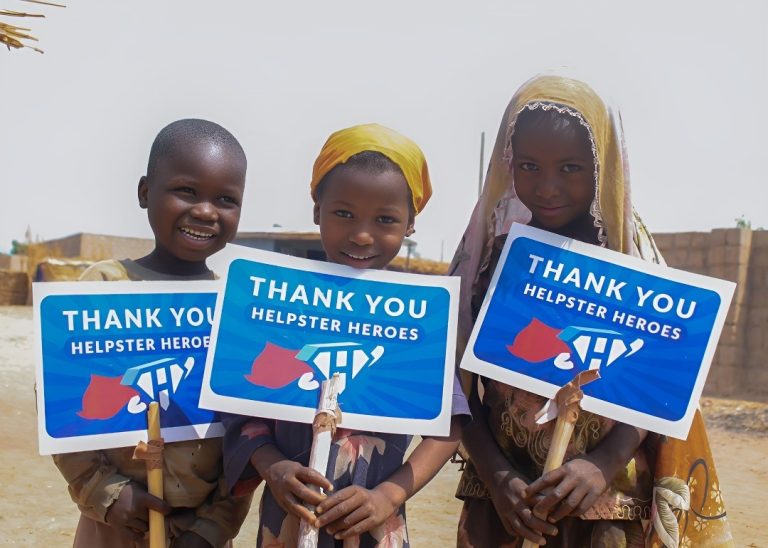
In a world where nearly half of the global population lack access to essential health services, Helpster Charity is stepping up with innovative solutions rooted in technology and transparency. The international nonprofit, which focuses on reducing child and maternal mortality in underserved regions in Africa and Asia, has released its 2024 Annual Report, offering a powerful glimpse into how digital platforms can bridge the gap between life-saving care and those who need it most.
Helpster’s mission resonates strongly in the context of sobering global health statistics. According to the World Health Organisation (WHO), an estimated 5 million children under the age of five died in 2023, and approximately 287,000 women lost their lives due to complications during pregnancy or childbirth, with most of them in low- and middle-income countries. Sub-Saharan Africa and South Asia account for nearly 86% of maternal deaths, primarily due to lack of access to timely, affordable and quality healthcare.
Helpster, founded by a team of tech-savvy humanitarian professionals, aims to change this narrative. Its platform functions both online and through a mobile application, enabling donors to fund treatments for children and expectant mothers in remote areas. This is achieved with unprecedented transparency as every donation is traceable and directly linked to a patient’s treatment journey.
2024: A year of growth and impact
The organisation’s 2024 report reveals striking progress. Over the past year, Helpster managed 786 patient cases through its healthcare funding programme, up significantly from the previous year. Of these, 515 patients were admitted to medical facilities, with 458 treatments completed and fully funded.
The average cost to save a life through Helpster’s system was a remarkably low $136 USD, a small sum by global standards, yet life-changing for those on the receiving end. The medical conditions treated ranged from life-threatening illnesses like pneumonia, malaria and heart disease to urgent surgical needs such as hernia repairs and caesarean sections.
A majority of Helpster’s work was concentrated in four countries: Kenya accounted for 48.8% of the total cases, followed by Nigeria at 39%, and Cambodia and Bangladesh together comprising the remaining 13%. These figures mirror regional disparities in healthcare infrastructure and highlight Helpster’s strategic focus on high-need areas.
Medical outreach: Reaching the unreachable
Beyond in-hospital treatment, Helpster expanded its impact through eight medical outreach campaigns across Nigeria, Kenya and Bangladesh. These missions provided free health screenings to 3,500 individuals in some of the most medically underserved regions. From these outreach activities, 1,485 people received treatment onsite and 54 patients were enrolled in Helpster’s core funding programme for more complex care.
These efforts are especially critical in countries like Nigeria and Bangladesh, where vast rural populations remain cut off from health services due to geographical, financial or infrastructural barriers. The WHO reports that in sub-Saharan Africa, only 53% of births are attended by skilled health personnel, compared to 99% in high-income countries.
A platform built on trust and technology
Helpster’s model sets it apart from traditional aid organisations by integrating modern technology into every step of the process. Donors can monitor exactly how their contributions are used, while partner hospitals and volunteers ensure patients receive the care they need swiftly and ethically.
Kate Lysykh, CEO of Helpster Charity, celebrated the organisation’s growing network and technological advances, including enhancements to its anti-fraud systems and hospital verification procedures.
“In 2024, we saw a 45% increase in completed treatments, and nearly doubled the number of patients reached through our medical outreaches compared to the previous year. Helpster is no longer just a charity but a movement. With 59 verified partner hospitals and 91 active volunteers, our platform connects vulnerable individuals with donors and healthcare professionals in real time, creating a transparent and efficient ecosystem of care”, Lysykh stated.
She emphasised the importance of community and institutional collaboration, calling on private donors, NGOs and public health systems to partner with Helpster in its mission to eradicate preventable child and maternal deaths. “There’s a place for everyone in this journey. Whether you’re a hospital, a healthcare worker, a corporate sponsor or a concerned individual, Helpster makes it easy to make a tangible impact.”
Bridging the global healthcare divide
Helpster’s achievements shine a light on the potential of tech-for-good initiatives to tackle some of the world’s most urgent health crises. Its low-cost, high-impact approach not only saves lives but also fosters trust, accountability and scalability which are often missing from traditional development models.
The stakes are high. UNICEF warns that without accelerated efforts, over 60 million children under five could die between now and 2030, many from treatable or preventable conditions. Similarly, millions of women will continue to die from childbirth complications unless access to healthcare becomes a global priority.
Helpster is proving that with the right combination of compassion, innovation and integrity, this trend can be reversed.
Support the mission
As global health challenges persist, Helpster offers a proven model that merges humanitarian impact with technological efficiency. To contribute to its life-saving work, individuals and organisations can donate directly via www.helpstercharity.org , where every dollar is tracked, every life counts and every story matters.
Stanley Olisa is the PR Manager for Helpster Charity US Inc, a global nonprofit easing healthcare access for vulnerable populations across Africa and Asia.



